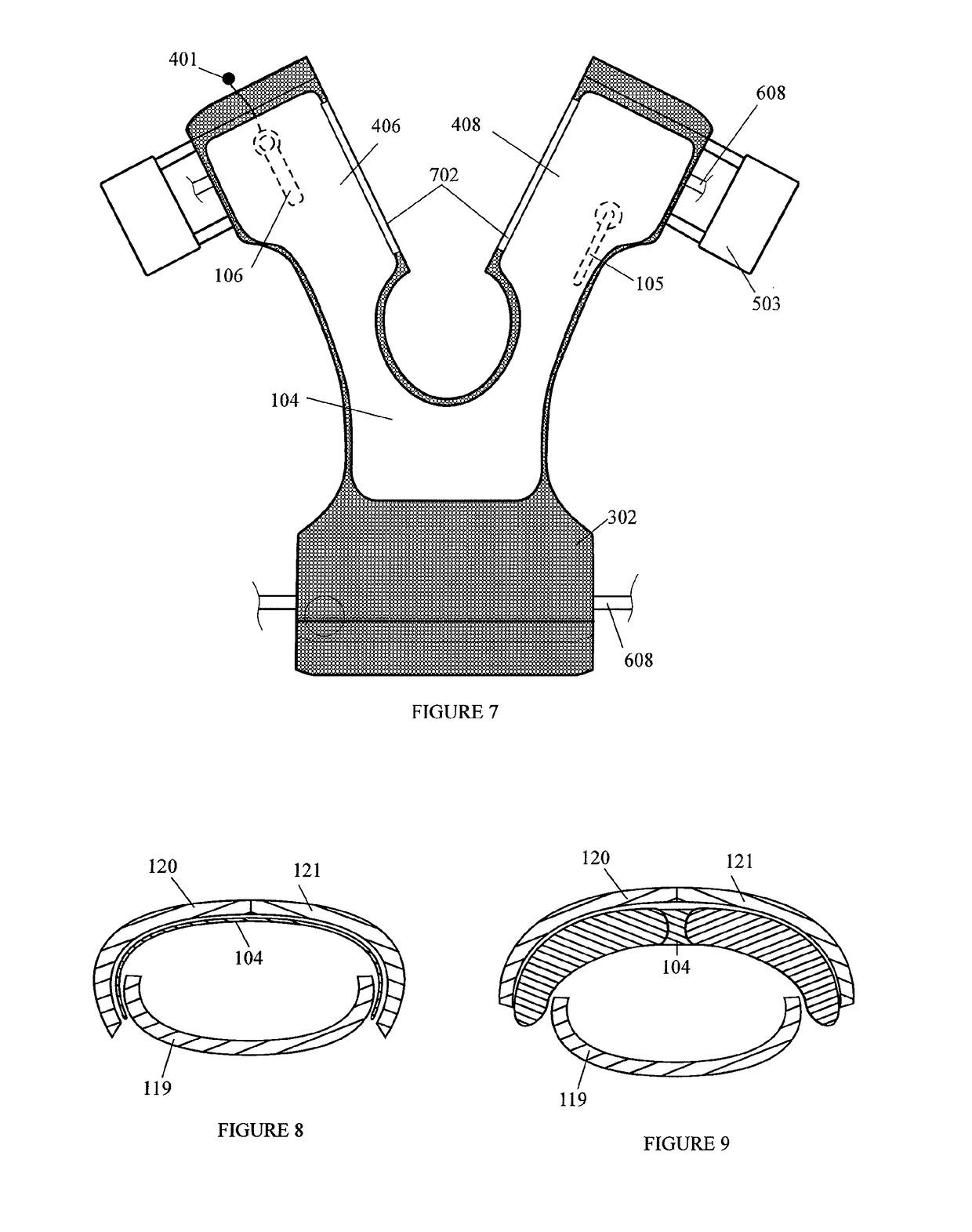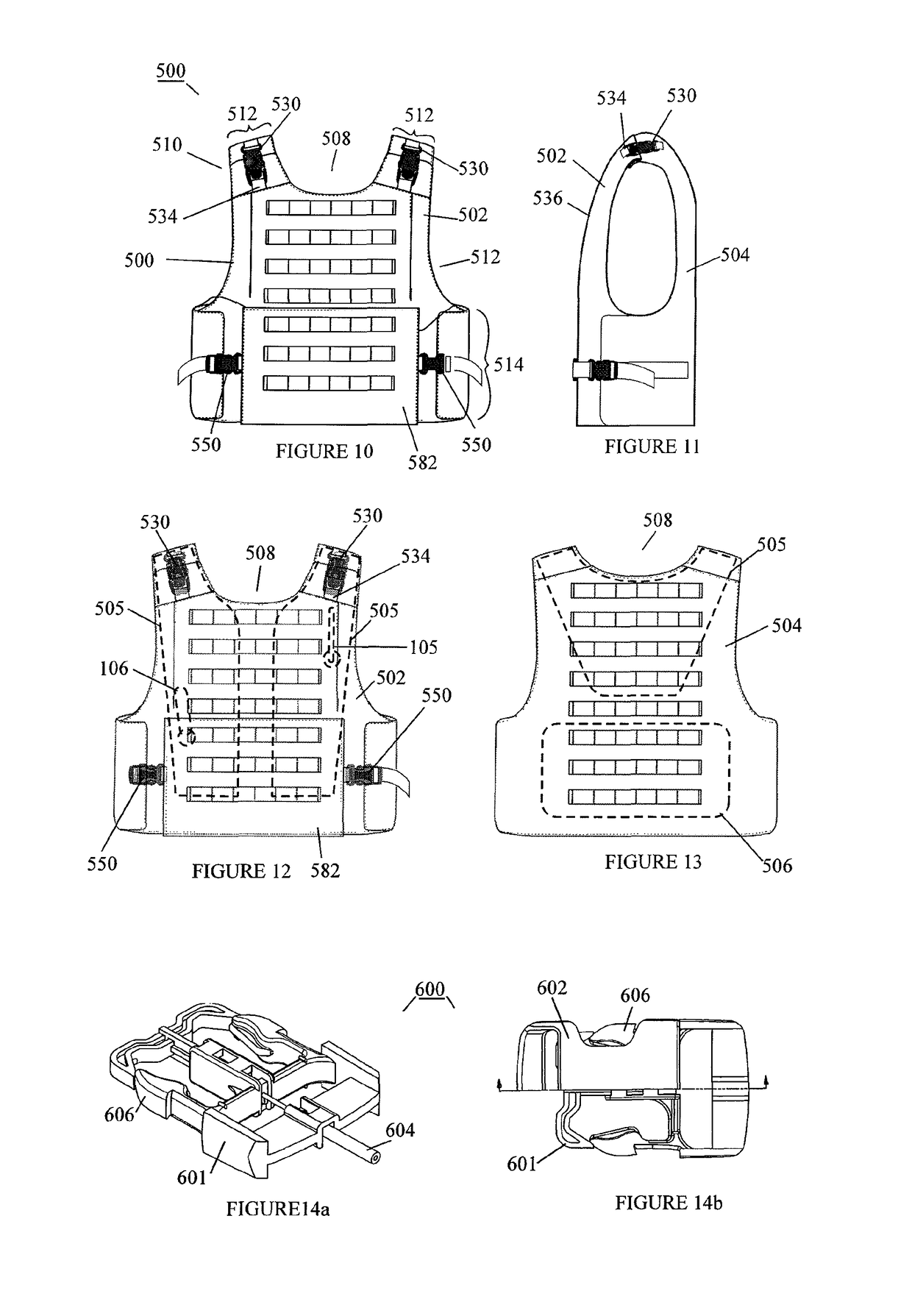Protective garment with an inflatable floatation bladder
a technology of protective garments and floatation bladders, applied in the field of body armour, can solve the problems of high stress and/or danger, wearer risk, and garments tend to be very stiff and restricting free movement, and achieve the effects of reliable, smooth and automated enlargement of internal volume, increased movement within the vest, and increased stress and/or danger
- Summary
- Abstract
- Description
- Claims
- Application Information
AI Technical Summary
Benefits of technology
Problems solved by technology
Method used
Image
Examples
Embodiment Construction
[0037]In FIG. 1, an armour vest 100 is configured to cover the torso of a user to protect generally at least some of the five vital organs, namely the heart, lungs, kidneys, liver and pancreas. The armour may cover other areas, as desired.
[0038]The vest may have a low profile to enable it to be worn under suitable outer clothing and thus as a concealed garment.
[0039]The armour vest 100 includes a detachable floatation bladder 104 providing, when deployed and inflated, buoyancy to the armour vest 100 and its wearer. The armour vest, in terms of its general construction, includes front left and right portions 120, 121 that attach to a back portion 119 at the shoulders, with a front opening 108 running from a neck opening to the bottom of the armour vest closed conventionally by a zipper 109. The front portions 120, 121 in combination with back portion 119 define a conventional sleeveless vest, with the front and back portions suitably sculpted. To provide an envelope and complete the ...
PUM
 Login to View More
Login to View More Abstract
Description
Claims
Application Information
 Login to View More
Login to View More - R&D
- Intellectual Property
- Life Sciences
- Materials
- Tech Scout
- Unparalleled Data Quality
- Higher Quality Content
- 60% Fewer Hallucinations
Browse by: Latest US Patents, China's latest patents, Technical Efficacy Thesaurus, Application Domain, Technology Topic, Popular Technical Reports.
© 2025 PatSnap. All rights reserved.Legal|Privacy policy|Modern Slavery Act Transparency Statement|Sitemap|About US| Contact US: help@patsnap.com



